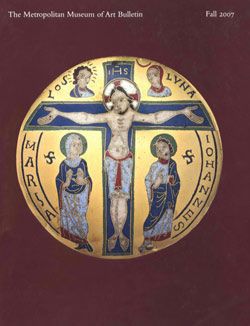The Sixth Patriarch of Zen at the Moment of Enlightenment
Kano Tan'yū Japanese
Inscribed by Takuan Sōhō 沢庵宗彭
Not on view
This small image, executed with a few brushstrokes in light ink, is Kano Tan'yū's reiteration of a legendary painting of the early thirteenth century by the renowned Southern Song Chinese painter Liang Kai (now in the Tokyo National Museum). It illustrates a Zen parable regarding Hui-neng (638–713), the sixth patriarch of Zen (Chan in Chinese), who suddenly found enlightenment as he was about to split a bamboo branch for firewood.
Tan'yū, the leader of the Kano school painters in Edo, kept copious pictorial records of works that he examined. Here, while clearly inspired by Liang Kai's painting, he skillfully manipulated broad ink washes to indicate the upper and lower parts of the body and eliminated details, leaving much to the viewer's imagination. The painting bears an inscription by Takuan Sōhō (1573–1645), one of the most prominent Zen monks in Japan's history, referring to a single strike of a knife that vanquishes all thoughts. The large seal below the colophon belongs to the Tayasu family, the house of the ninth Tokugawa shogun Ieshige (1711–1761), indicating the painting's previous ownership.
This image cannot be enlarged, viewed at full screen, or downloaded.
This artwork is meant to be viewed from right to left. Scroll left to view more.




